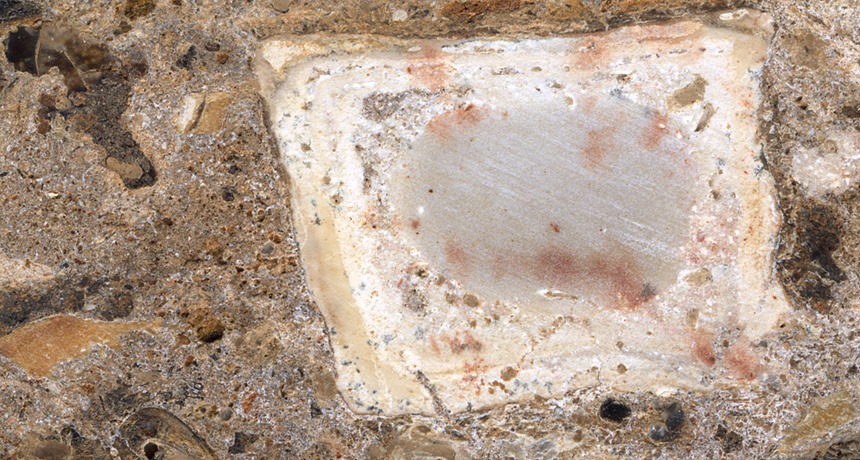Fire used regularly for cooking for 300,000 years
Hearth in Stone Age cave suggests shift to regular fire use in Middle East

BAR-B-CLUES Analyses of light-colored sediment in a 300,000-year-old fireplace, including this roughly 3-square-centimeter patch, revealed bits of burned bone and charred wood embedded in wood ash.
R. Shahack-Gross/Qesem Cave Project